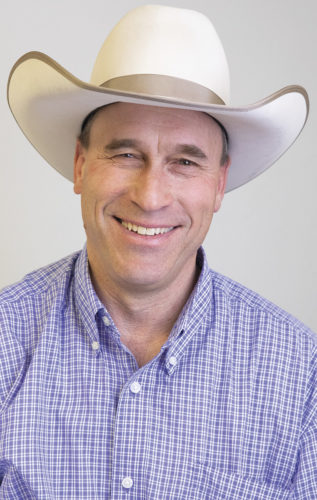My current horseshoeing vocation is a byproduct of exasperation and miserliness. It’s tough enough to fork over $80, or more, to have a horse shod – to say nothing of the fact that the horseshoer is three days late.
My horseshoeing education began, at the behest of my father, when I was a teenager. He deemed it a skill worth learning – much like welding, shingling a roof, splicing barbed wire, reading and whistling loud enough to get the dog to come back.
I picked up a few tricks over the years from some folks who were pretty handy with a hoof knife and a rasp. From Don to Carnell and Greg to Gail (who continued shoeing horses for years after he lost his arm in an electrical accident), I picked up tricks and subtle nuances I use every time I tack some iron on a hoof.
I remember watching Doc Woolstenhulme shoe our horses when I was a kid. He’d always work counter-clockwise around the horse, starting with the left front foot. I don’t know if it’s right or wrong, but I almost always follow that same routine. Otherwise, the earth doesn’t seem to tilt just right on its axis.
I’m far from the most orderly wrench in the row, but I do have my little obsessive compulsions. To this day, my kids get the hives when I have them saddle the horses – because if the blankets aren’t perfectly even on each corner under the saddle, they know they’ll have to do it again.
Because I usually shoe just the same seven to 10 horses, two or three times a year, I’m intimately familiar with the quirks and tendencies of each horse.
Dixie, though the handiest and cowiest mare on the place, stands on feet that are too small and too dry in the summer. She’s not mean, but she’s jumpy and quick to sulk if she’s scolded.
My dad’s big roan gelding is a dream to shoe. I can finish shoeing him in about half the time it takes me to shoe Dixie. He never fusses and, just like he is in the sorting pen or on the mountain, never flinches and goes about everything as if it’s all business.
Copper is stout-made, pretty and athletic, but she’s short-coupled and impatient. By the time I’m done shoeing her, I’ve usually had enough.
I haven’t bothered to shoe Leo, the big old paint gelding, this year. He’s not quite what I’d call crippled, but he seems stove-up enough that we don’t dare give him a very serious job anymore. I told my dad I figured we could use him to put a dude or little kid on to follow cows up a trail.
My dad balked at that idea like he would at a plate of sushi and steamed cabbage. He still doesn’t trust the big paint. Still fresh in his memory is the vision of 250 pounds of salt and salt trays being scattered across the ridge about 18 years ago, when the horse was still young but old enough to know better.
The salt didn’t get to where we needed it because the horse trashed the pack trays and didn’t stop snorting and carrying on until he was a mile-and-a-half down the trail.
Or maybe he remembers the time I was riding pens at the feedlot and the paint horse dumped me in the feedbunk, cracking two of my ribs. Whatever his fears, Dad seems to think that a leopard, or in this case, a paint horse, won’t change his spots.
While my father’s mistrust is based on solid evidence and personal experience, I, in my naivete, would like to think there might be some decency in the big, leggy gelding.
Dixie’s a princess to ride but a witch to shoe. Copper’s sometimes a lonely pain when she’s out of sight of another horse when we’re gathering, but she’s easy on the eyes and she’ll put you right on the tail of anything you need to rope.
Even the big roan gelding has some imperfections, though Dad probably can’t find them.
I’ve decided a pen of horses is a lot like horseshoers, women or just about any other individual or group of people you could name, outside of Abraham Lincoln, Mother Theresa or George Strait.
Every individual is different, and every individual usually has at least a touch of both good and bad. And everyone can change for the better. Sometimes a change comes only after the compelling influences of age and gravity have stepped in the saddle, but it can come nonetheless.
I’m sure that before I’m finished here on the blue planet, I’ll get burned by someone I trusted and knocked on my head or tailbone by some knothead colt. My travails notwithstanding, I’ll keep looking for and trusting in the good ones – both human and equine. ![]()







